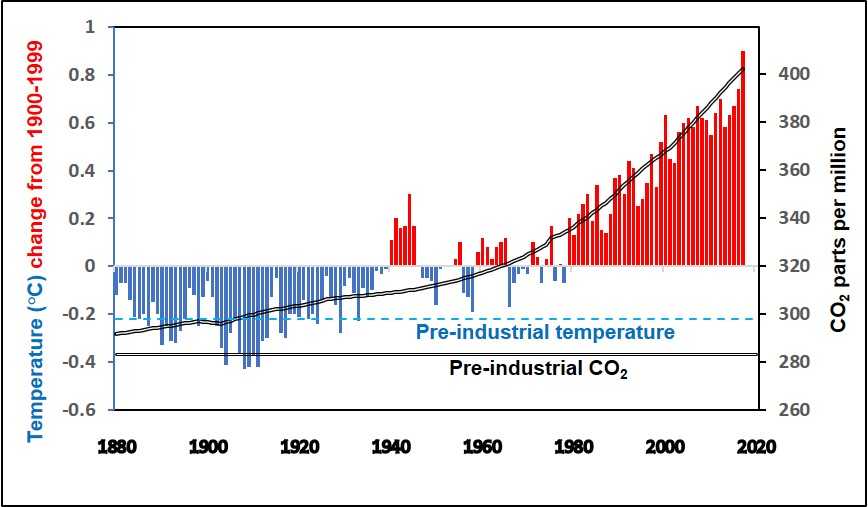
Global levels of carbon dioxide and air temperature are rising year by year above the pre-industrial levels. © Creative Commons.
Our planet is warming. Some warming is to be expected, due to gradual expansion of the sun and to small changes in the earth’s orbit. However, such effects can be predicted and cannot explain the rapid warming we have now. This warming has accelerated as human industry and travel has developed. It fits another prediction, made by a Swedish scientist 150 years ago, that an increase of some gasses could cause the atmosphere to trap more of the sun’s warmth. The shocking temperature increase of the last 70 years can be explained by the rise in levels of ‘greenhouse’ gasses, of which carbon dioxide and methane are the most abundant.
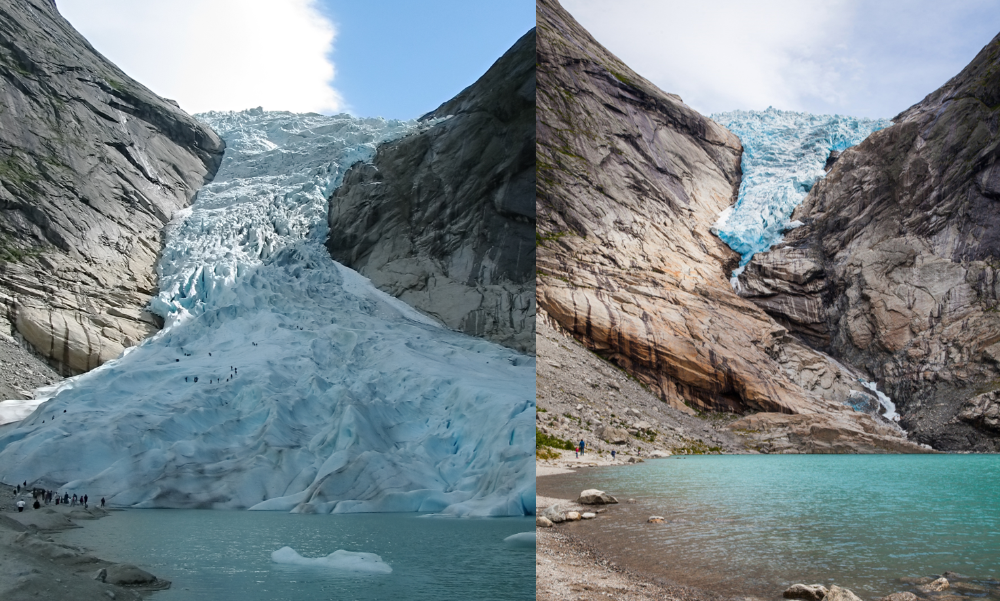
Twelve years of retreat in the Norwegian Briksdal glacier, which covered the lake just a decade earlier. © Mateusz Kurzik/Oleg Kozlov/Shutterstock
The rising temperature of the earth has two main effects. The most gradual effect is the melting of ice in the polar regions. The glaciers in Antarctica and Greenland are melting and flowing faster. They shed ice that covers land to melt in the sea and thus raise sea-levels around the world, by perhaps as much as a metre this century. The more rapid effect is the change in climate, which is associated with change in sea temperatures and in weather patterns affected by sea temperatures. More water vapour rises into the atmosphere from warmer seas, and changing weather patterns give some areas more rain and storms than usual. In contrast, other areas experience longer periods of dry weather and shortage of stored water.
What happens when climate changes
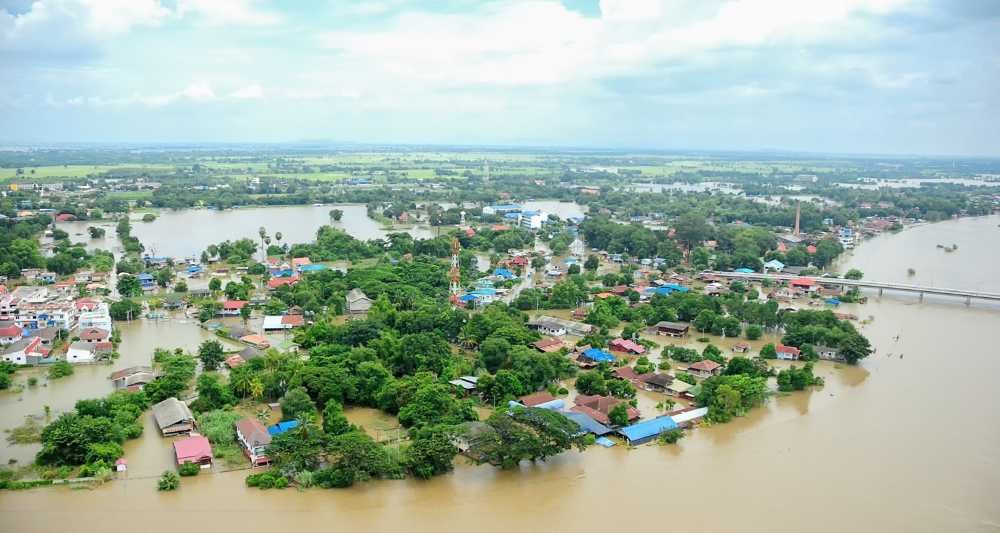
Flood in Thailand © Atikan Pornchaprasit/Shutterstock
Human populations have become large thanks to the development of agriculture during several millennia of clement weather. However, the present rise in global temperature threatens humans and nature in four ways: flood, fire, famine and disease. Floods are made worse by rising seas in low areas and heavy rain which washes away soil elsewhere. Long periods of dry weather make vegetation more likely to dry, and then to burn in wild-fires. Drought and flood affect vegetation as food for humans and other animals, causing famines which can be made worse by shortages of drinking water. These effects also render plants and animals vulnerable to tropical diseases, which spread towards the poles in the new warmer climate.
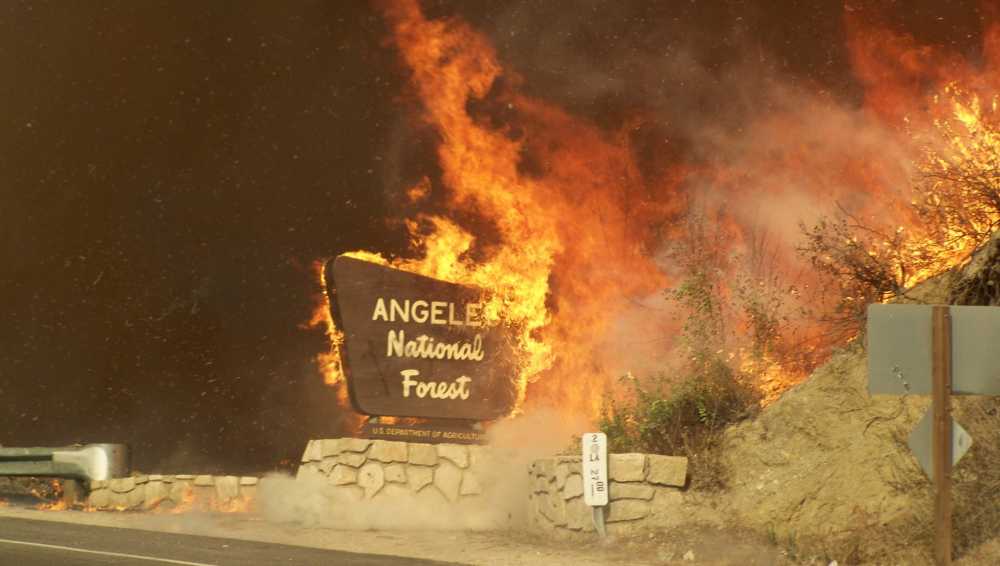
Wildfire in the USA © ARM/Shutterstock
The carbon-dioxide level rises with increased burning of fossil fuels, including coal, oil and gas. Even if we stopped burning these fuels, the present gradual temperature rise will take many decades to reverse. Even greater danger is that the temperature rise reaches a tipping point at which it is very hard to reverse. This makes the destruction of huge tropical forests extremely worrying. If other woodland is lost to wild-fires and soils to drought, local people must move. More humans will be displaced if rise in sea-level helps storms to flood coastal cities. Could such displacement risk tipping international attention entirely away from solutions to climate change, nature conservation and our own survival?
What can we do?
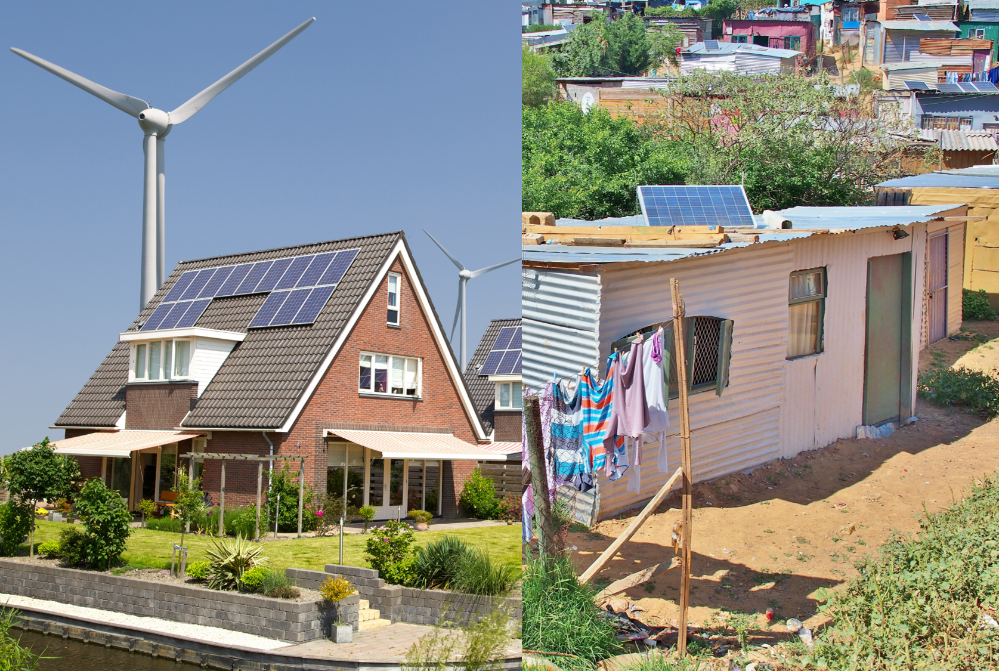
New household energy supplies in Europe and Africa © Hecke61/MrNovel/Shutterstock
There are nature-based solutions to help the seas, soils and vegetation to absorb more carbon. Planting of trees much more widely gradually generates new soil, as well as giving opportunity to store carbon as timber in buildings. Methods to restore soil moisture through ecosystem restoration, notably in peatlands, new woodland and regenerative agriculture, could help greatly. There are also engineered solutions. Electricity generated from sunlight and wind can replace fossil fuels for powering homes, industry and transport, provided we can find ways to store enough energy for calm periods of darkness. Northern countries need to adopt more sustainable life styles, and to help southern countries make this transition, because we all share the same planet. Whatever we do, we need to act fast, before any tipping points are reached.